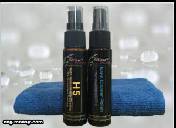Inorganic Nano Coatings 3 From 4

Unique Properties
The inherent nature of inorganic coatings create many unique properties that cannot otherwise be replicated.
One of the most important properties from a safety perspective is that they are fire-resistant.
Completely inorganic coatings are made up of various minerals and inert materials that are inherently fire resistant.
These materials will not burn even under extreme temperatures, which is extremely important for fire safety. When a fire occurs the main reason that causalities occur is not from the fire itself, but actually from the resulting smoke and dangerous fumes from burning materials.
Using an inorganic coating for the interior of such a building will prevent the generation of harmful smoke and fumes hopefully saving the lives of those trapped inside.
Another aspect of inorganic coatings that makes them unique is their ultraviolet (UV) resistance.
UV light in its strongest form is found in sunlight, but is also emitted by almost any light source.
And even though sunlight is the reason for life on Earth, its intensity also tends destroys organic materials.
This also holds true for organic coatings and the materials that bind them.
Typical paints will chip, peel, become brittle, and will lade in color after prolonged exposure to UV light. Inorganic coatings do not have this
weakness and will not brittle or fade in color throughout their entire lifecycle. Furthermore this allows for the inclusion of materials that will accentuate the positive effects of UV light.
“Self-Cleaning” is a term that means surfaces will keep themselves clean by using UV light.
This property can be enhanced in
inorganic coatings by using catalysts, such as nano sized particles titanium dioxide.
These catalysts intensify the effects of UV light enhancing their ability to destroy organics.



